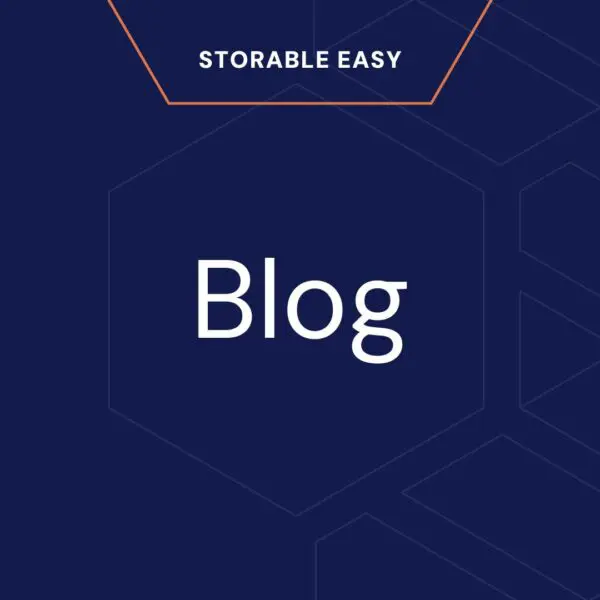Responding to the market with the right pricing strategy is a constant challenge for self-storage operators, especially during times when demand is limited and supply is abundant. As the residential real estate market slows and job growth falls short, many operators find themselves in this situation, particularly in markets that expanded supply during the pandemic-era boom.
Every market presents a different scenario, which means there is no one-size-fits-all pricing strategy. For example, when comparing average rate data for the top five states by search interest to the bottom five, the bottom five actually had higher rental rates on average than the top five. One might expect higher rents in markets with the most demand, but this is not always the case. States with higher demand tend to be more competitive in pricing. Operators in these areas often rely on discounts and promotions to attract and convert tenants. This effect is most pronounced in densely populated urban and suburban markets where operators are concentrated. Many high-demand markets are also still absorbing new supply from the last development cycle, which further limits price growth.
In contrast, states with lower search demand typically have more limited self-storage supply. Operators in these markets have more pricing power and flexibility to experiment with rent increases. They often benefit from a more stable and mature tenant base, particularly in select suburban and rural areas.
Pricing Strategies for Self-Storage Operators
When setting a pricing strategy, operators need three key pieces of information:
- The level of demand in the market
- The current supply in the market
- The facility’s occupancy objectives
From there, operators can adopt a pricing strategy that aligns with their goals, whether pushing rates or raising occupancy. Three main strategies are commonly used in the self-storage industry.
Market-Based (Dynamic) Pricing
Market-based pricing, also known as dynamic pricing, adjusts rates in real time based on factors such as local demand, occupancy, and competitor activity. Automated revenue management systems raise rates when units are filling quickly or competitors increase theirs, and they reduce rates or offer promotions when demand softens. This approach is widely used by REITs and large operators who rely on data-driven optimization.
The advantage of market-based pricing is its ability to maximize revenue per unit while responding quickly to local demand shifts. However, frequent rate changes can confuse or frustrate tenants, and dynamic models require accurate data and active monitoring.
A market-based strategy is best suited for competitive markets with moderate to high demand and balanced supply, where the goal is to grow revenue and optimize yield rather than simply fill units.
Storable Easy offers automated revenue management, which provides rate recommendations based on changes in facility occupancy. This simplified and cost-effective approach to market-based pricing allows operators to optimize rates relative to demand while maintaining control of setting rates.
Value-Based (Segmented) Pricing
Value-based pricing sets rent according to perceived customer value. Units with features such as climate control, drive-up access, or convenient locations can command higher rates. Pricing can also vary by customer type, including students, movers, or businesses, based on their willingness to pay. This approach emphasizes the unique advantages and convenience of the facility rather than competing solely on price.
The strength of value-based pricing lies in aligning rates with customer experience, allowing operators to capture higher margins without relying on discounts. The main challenge is understanding customer behavior and clearly differentiating the facility to justify premium rates. This approach works best in markets with steady or growing demand and moderate supply, where the goal is to maintain occupancy while improving overall revenue quality.
Cost-Plus (Baseline Margin) Pricing
Cost-plus pricing is the most straightforward approach. Operators calculate operational costs and add a target profit margin. Rates are typically reviewed periodically rather than adjusted continuously, making this model appealing to smaller or independent operators who prioritize simplicity and predictability.
This approach is easy to manage and builds customer trust through stable, transparent pricing. The tradeoff is that it may miss revenue opportunities during high-demand periods or struggle in highly competitive markets. Cost-plus pricing is most effective in areas with low to moderate demand and stable supply, where the primary goal is to maintain occupancy and steady cash flow rather than chase rapid growth.
What About Low-Demand, Over-Supplied Markets?
Markets with low demand and high supply present the greatest challenge. In these conditions, the main objective shifts from maximizing revenue to driving occupancy and retention. A full facility, even at lower rents, is often more valuable than empty units with premium pricing.
Operators in these markets often rely on aggressive move-in discounts, short-term promotions, and flexible lease terms. Combining market-based pricing with value-based strategies, such as bundling free amenities or emphasizing service quality, can differentiate a property without eroding perceived value. Cost-plus pricing is generally less effective unless costs can be substantially reduced. Success in oversupplied markets depends on flexibility, creativity, and maintaining customer loyalty.
Choosing the Right Strategy
Selecting the right pricing strategy depends on where a facility sits in its local market cycle and its short-term goals. In competitive, high-demand areas, market-based pricing can help operators maximize revenue from every unit. In stable markets, value-based pricing can strengthen margins and build customer loyalty. Cost-plus pricing provides consistency and simplicity when market conditions are predictable.
Many operators find that blending strategies works best. Using dynamic tools for move-in promotions while applying value-based principles for long-term tenants can balance growth, stability, and profitability. Whatever your pricing approach, operators who carefully assess supply, demand, and occupancy objectives are best positioned to achieve their revenue and retention goals.
With features like automated revenue management, Storable Easy delivers effective tools and services to power your self-storage business. Reach out to us to get started.


